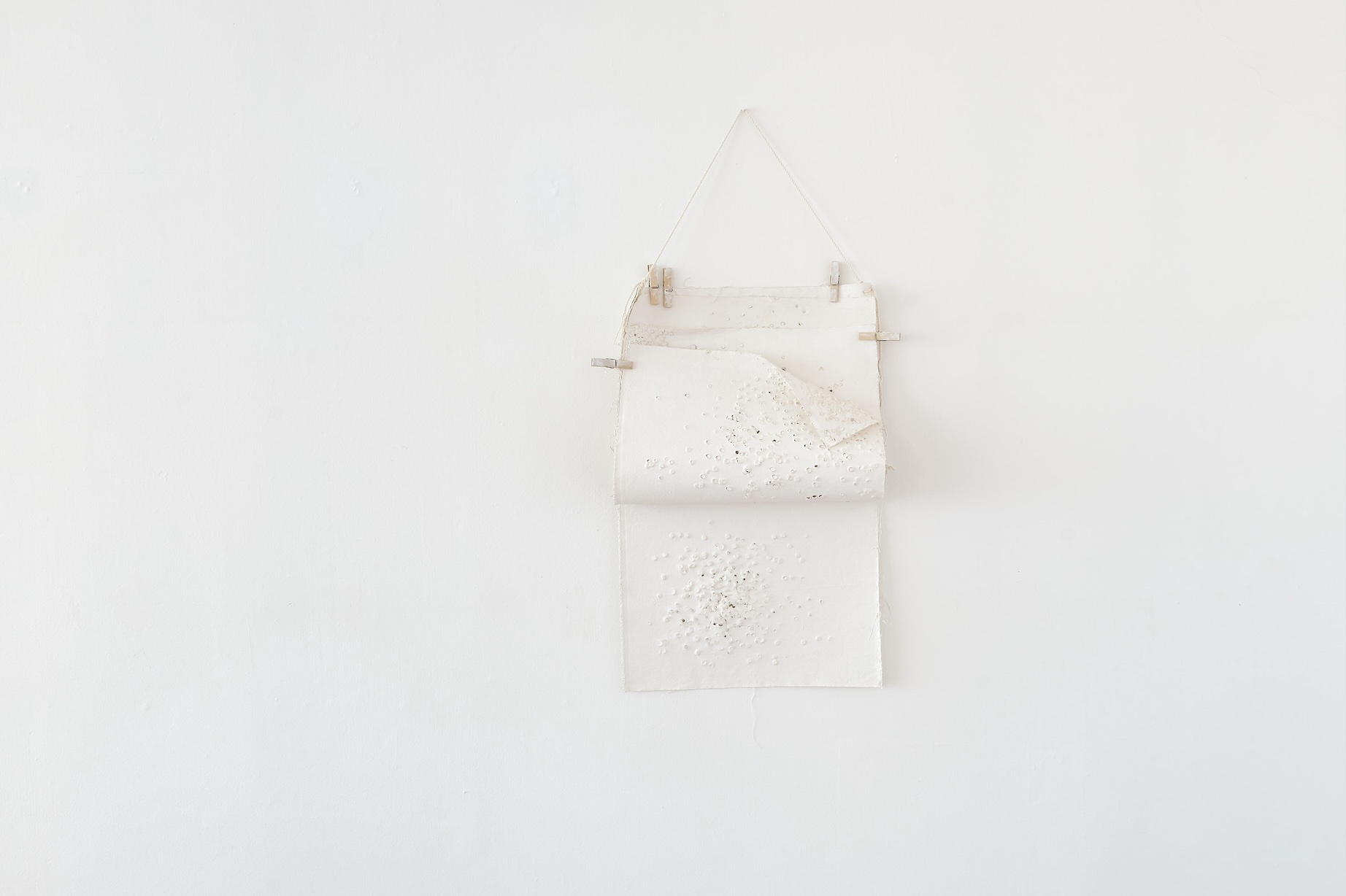
Review
The Primary Gesture. On 'Cada cosa, casi todo' by Ana Bidart at Proyecto Paralelo
by Lia Quezada
Reading time
4 min
The line for the elevator is long, but I insist we wait: something about its olive green intrigues me. The number indicating the floor we’re on lights up seven times before revealing the gallery’s interior.
Ana is right: the exhibition changes depending on the time of day you visit. I came on Friday afternoon and returned Monday night. I’ll come once more at noon—Wednesday. The three memories overlap: the first time, the artist guided me through the pieces. The second, it was a stop during the Material Monday tour; there was mezcal, and I wore sandals that glitter. Today it’s cloudy; there was light rain earlier. Two new paintings have just arrived from Proyecto Paralelo’s booth at this year’s ZONA MACO.
It’s true, too, that the room doesn’t have a central figure. The setup feels like a studio: rubber sandals—on sale for $1,400 USD—seem to have been left behind in a corner; the light switch is smeared with blue paint; on one of the walls, I find sketches of the pieces on display. The five canvases, unframed, feel like they’re still in progress: a brushstroke could easily be added here or there.
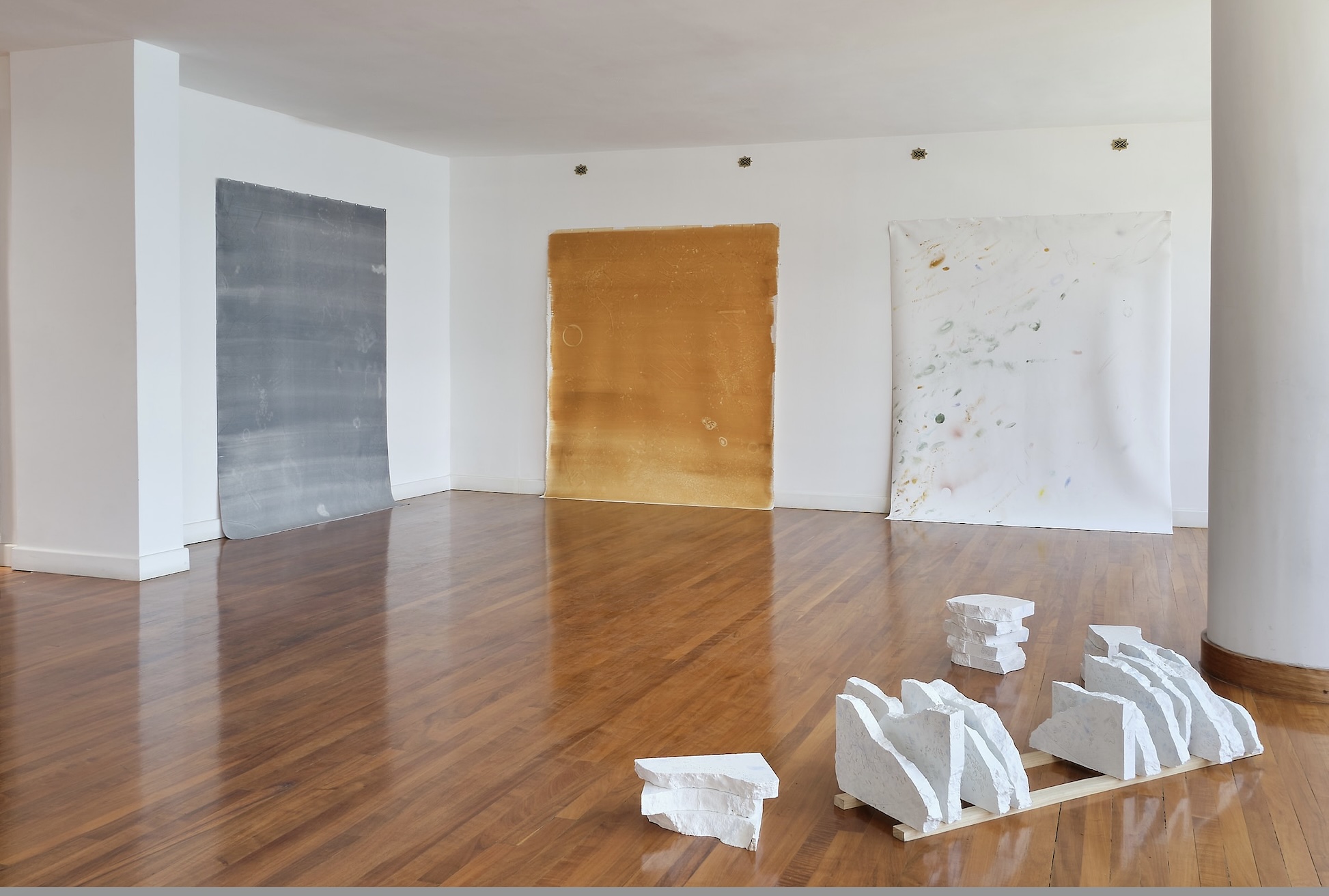
The artist is interested in this idea of open work. She tells me this about (puerta) (2024), painted with acrylic and plaster, held up by a wooden post with three hinges that allow it to move. Originally, it was used to create the Grabados experimentales she presented at the ninth edition of Salón ACME. It wasn’t until this exhibition that she began exploring its potential as a piece in itself.
The second time I attend, during the opening, I approach her to check if the secret Ana confided in me—a little smiley face painted on one of the gallery’s white columns—is still there. Through the window, I see two people tossing a balloon to each other in the office building across the street. I look around for the artist, hoping she sees them too, and I find her among the guests, wearing a white blouse with—of course—blue spots.
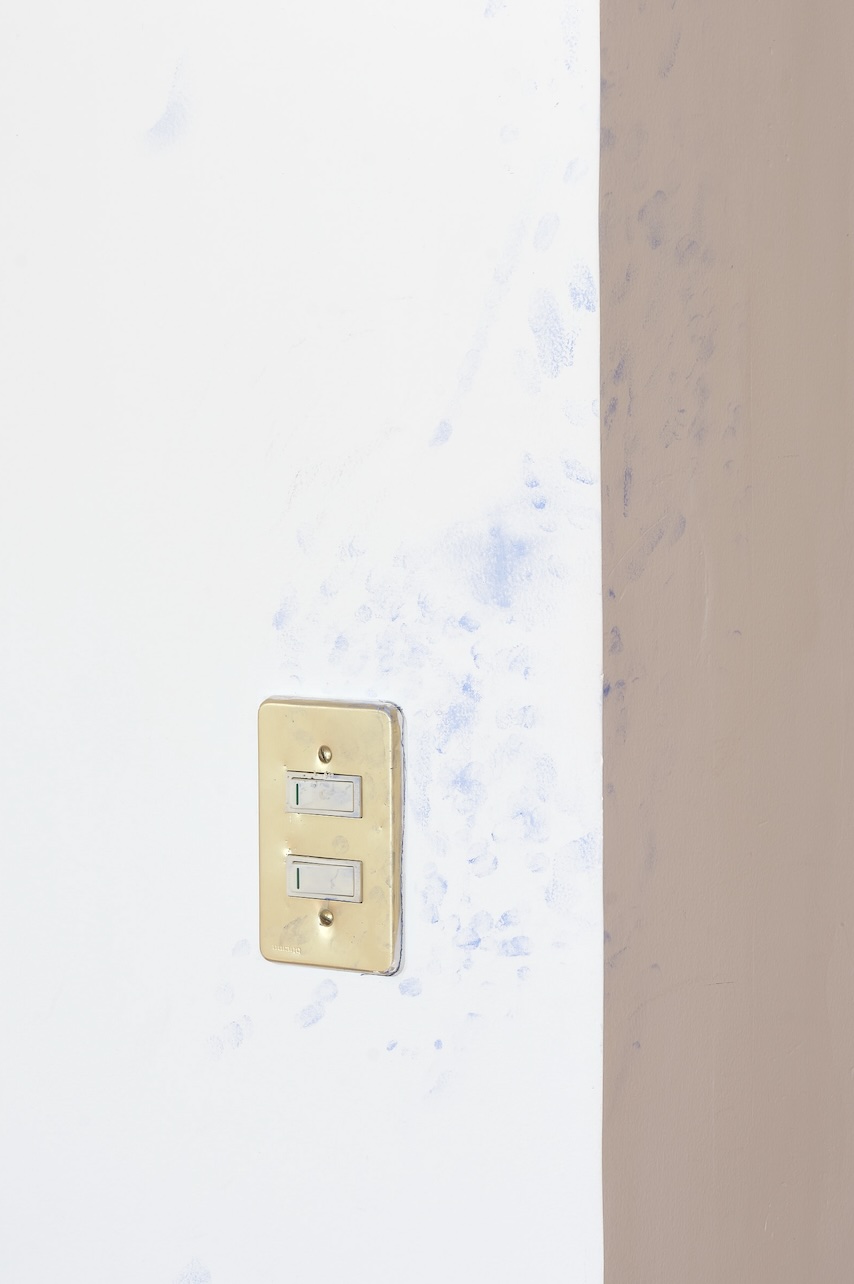
There’s something playful in Ana’s work. Microdancing (2024), my favorite canvas, has bacterial forms that she created by placing the canvas on the floor, diluting the oil paint, and spreading it with her heels. In the other monochromes, she used threads, jar lids, cups, and cloths—whatever she had on hand. “It’s a bit like drawing on the sand at the beach,” she says. Playful not in a childish sense, but in a primary one: something simple, spontaneous, and, in a way, ancient. Like an unwritten language.
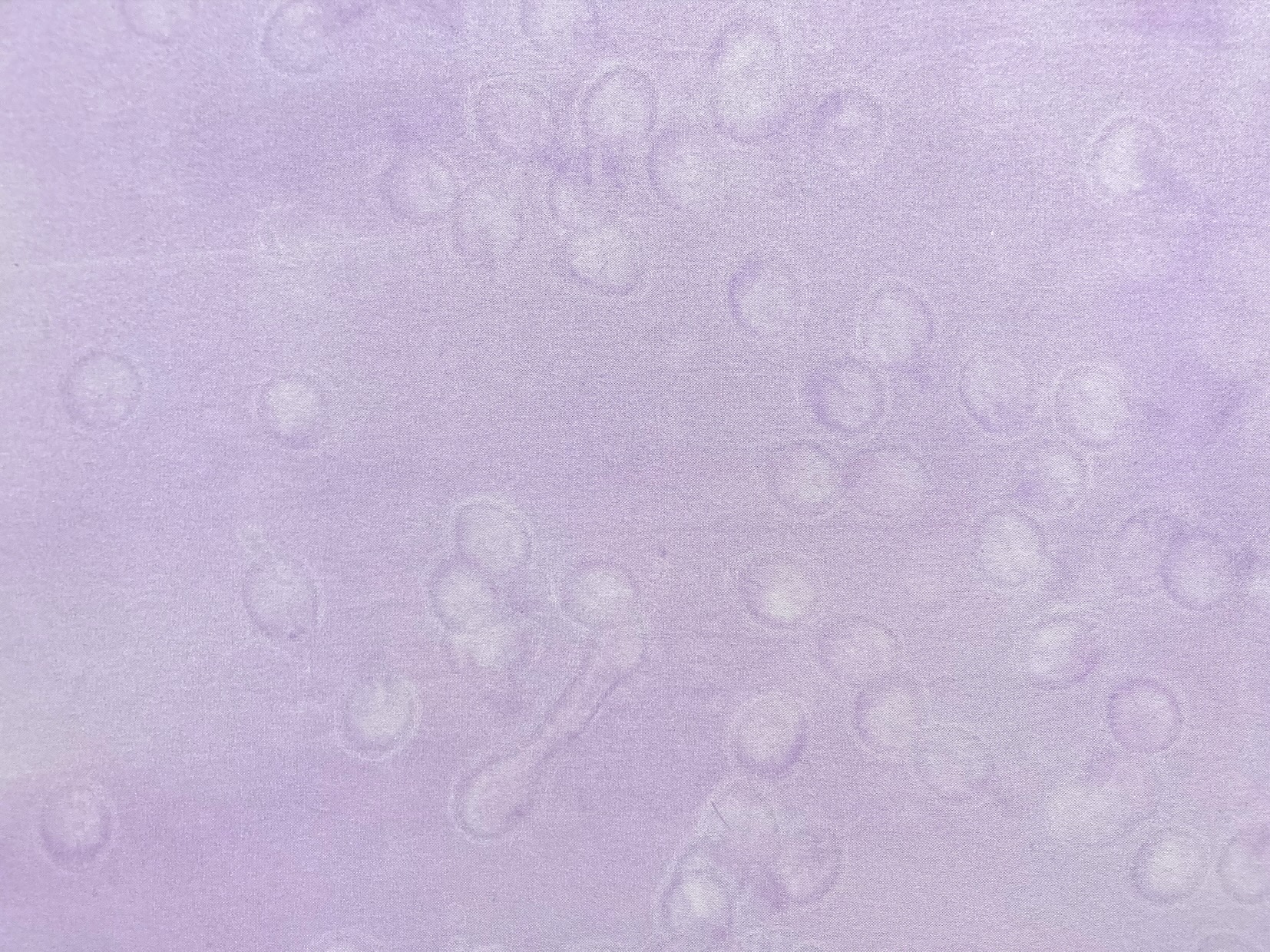
tmp (archivo de datos temporales) (2023), the piece at the center of the room, consists of 32 fragments of limestone, engraved and painted with acrylic. Each one, she tells me, holds different levels of record: the geological layers that shaped the stone, the marks left by the saw that cut it, and those she engraved and painted. I ask about the number 32, and she talks about dental pieces; I ask about the blue, and she mentions blueprints. Lastly, I ask about the arrangement of the pieces: she says the space in the middle was considered for the body of the observer.
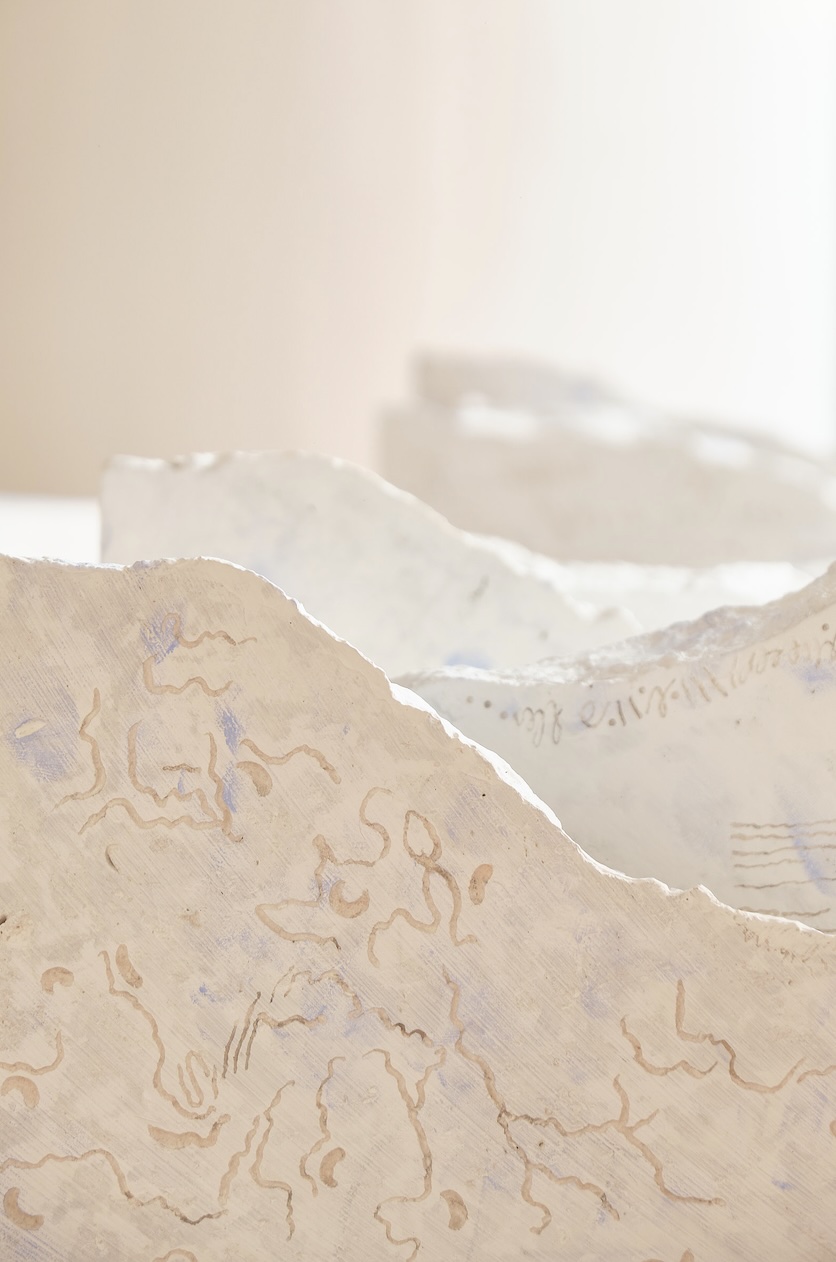
It’s the third day, and I crouch down, at the center of the "jaw." I like the contrast between the stones and the reflection of the BBVA tower on the building across the street. Ana is interested in the traces the body leaves on surfaces, whether in the wear on a staircase’s steps, the Chicxulub crater, or the cave paintings in Serra da Capivara, in northeastern Brazil.
Translated to English by Luis Sokol
Published on March 30 2025